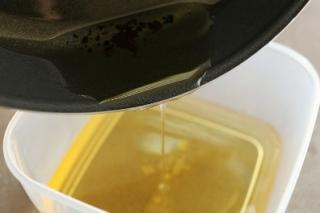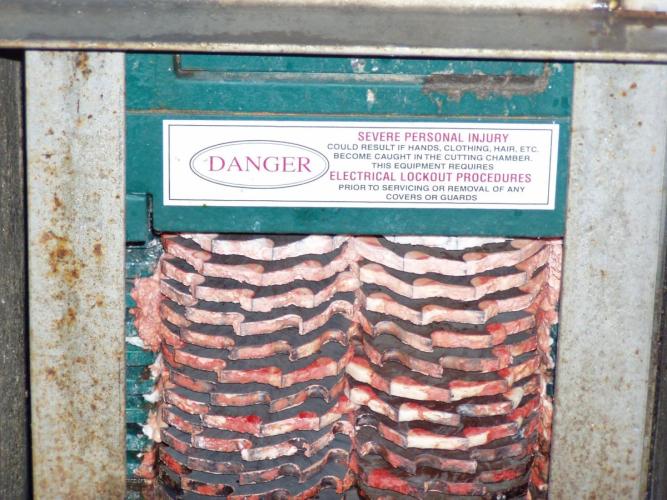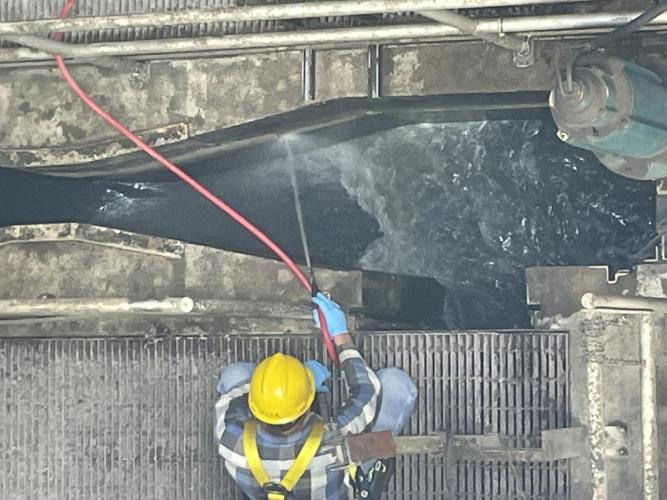Fats, Oils, and Grease

What is F.O.G.?
Fats, oils, and grease, also known as FOG, come from cooking oil, bacon grease, meat fat, food scraps, shortening, butter, margarine, gravy, dairy products, and other food products such as mayonnaise, salad dressing, and sour cream.
When FOG is poured down kitchen drains, it accumulates inside sewer pipes. As the FOG builds up, it restricts the flow in pipes and can cause untreated wastewater to backup into homes and businesses, resulting in high costs for cleanup and restoration.
How does the WalCoMet municipal code address FOG?
Section 604 (e) of the Sewer Use Ordinance No. 82-001 states, “Wastewater containing floatable oils, fat or grease… shall be limited in discharges to sanitary sewer systems to concentrations or quantities which will not harm the sanitary sewers, wastewater treatment process, or equipment; will not have an adverse effect on the receiving stream; or will not otherwise endanger lives, limb, public property, or constitute a nuisance.”
Section 3.5 of the Pretreatment Ordinance No. 96-001 states “No person shall discharge into any Municipal Wastewater Collection Facility any liquid wastes containing fat, oil, grease, flammable wastes, sand, or other harmful wastes, except in accordance with the provisions of this Section 3.5.”
Why should FOG matter to you?
When washed down the sink or drain, FOG builds up over time and can cause blockage in your drains, pipes, and in the sanitary sewers. Overtime, the FOG buildup could block the entire line and cause sewer backups which may result in clogged drains or toilets, raw sewage backing up into your home, raw sewage overflowing into the environment, expensive cleanup, repair, and replacement of damaged property, high wastewater system operation and maintenance costs, unpleasant odors, and potential public health risks.
How can you reduce FOG in our sewers?
- Pour cooking fat or grease into a small container. Once it cools or solidifies, place it in the garbage.
- Do not pour FOG into garbage disposals, sinks, toilets, or floor drains.
- Dispose of greasy solid waste in the garbage.
- “Dry wipe” pots, pans, and other dishes before washing to minimize the amount of FOG and solids washed down the drain.
- Do not put used cooking oil, oil-based paints, motor oil, solvents or other chemicals down sewer lines or in storm drains. Large quantities of home cooking oil from fryers should be poured back into the original oil containers. Dispose of used oil at Hazardous Waste Events. For more information, visit: https://www.co.walworth.wi.us/342/Solid-Waste-Recycling
- Educate others on the damage FOG can cause.
Spread the word…
You can help educate others about FOG by sharing this information with friends, family, and neighbors. WalCoMet is working hard to improve Walworth County’s water quality by informing residents and businesses of ways to reduce water pollution, sewer backups, and improve the quality of life for those who live and work here.
Handouts and Guides
FOG Buildup in Lift Station Grinder |
WalCoMet Staff Removing FOG from Influent Channel |
|


